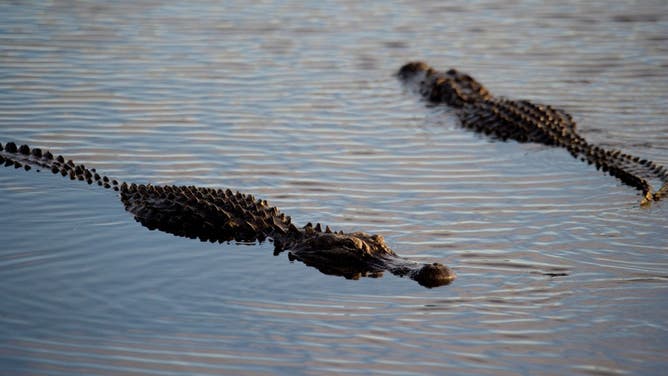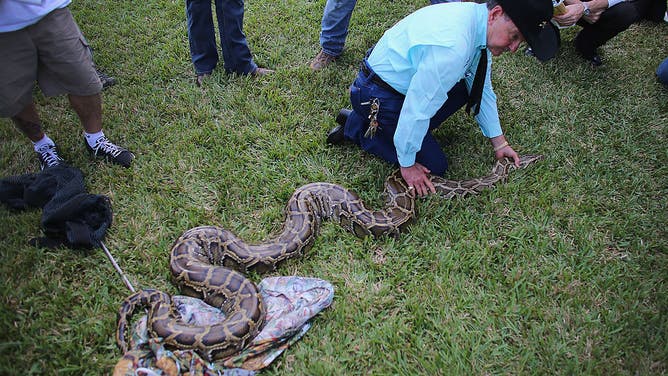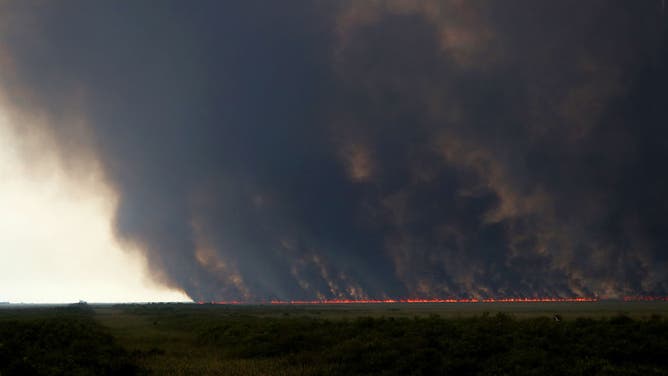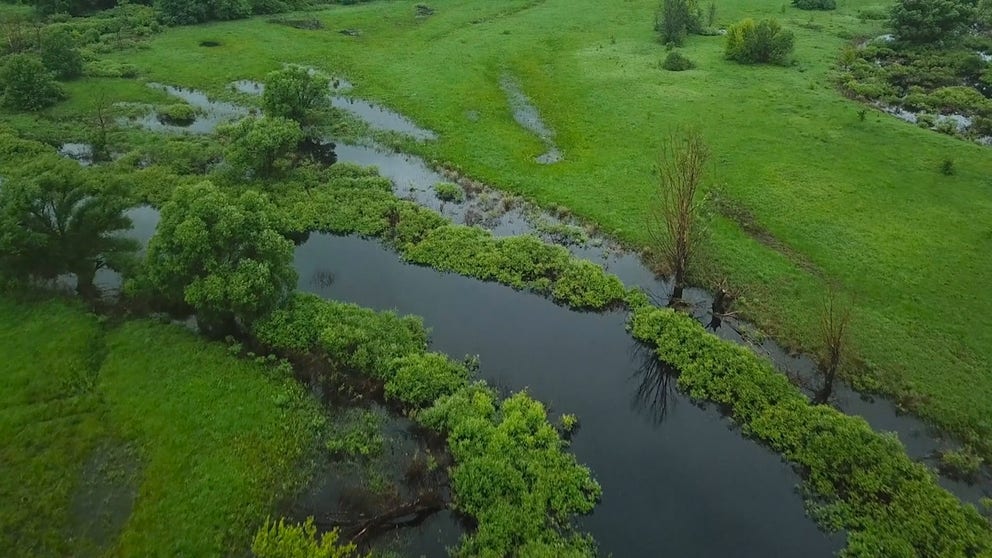7 things to know about Everglades National Park
Everglades National Park is one of only 59 parks managed by the National Park Service
Everglades National Park
Everglades National Park is vital in preserving the wetlands habitat of South Florida.
The southern end of the Florida Peninsula not only serves as being home to thousands of unique animals, it also is where the Everglades National Park welcomes nearly a million visitors each year.
Over the last several decades, the health of the ecosystem has been challenged by invasive species and human sprawl, but experts say the park has remained resilient in the light of the impacts.
South Florida’s subtropical climate provides plenty of warm, rainy days that the plants and animals depend on for their survival.
Here are seven facts to know about Everglades National Park.
HOW TO WATCH FOX WEATHER ON TV
Only place where alligators and crocodiles co-exist in wild
The ecosystem of 1.5 million acres of the Everglades National Park and surrounding lands is the only place in the world where American alligators and crocodiles co-exist in the wild.
Experts say this is possible because there is a mixture of freshwater and saltwater.
The National Wildlife Federation says the crocodiles favor saltwater, while alligators are mostly found in freshwater habitats.
Because the park falls more in line with what alligators are accustomed to, visitors will spot many more gators than their reptilian counterparts.
The Florida Fish and Wildlife Conservation Commission estimates there are more than 200,000 alligators in the Everglades but only about 2,000 crocodiles.

USA. Florida. Everglades: Florida alligator.
(Vittorio Sciosia/REDA&CO/Universal Images Group via Getty Images / Getty Images)
The largest remaining subtropical wilderness left in North America
Biologists say more than 40 species of mammals are found in the unique ecosystem, in addition to the countless species of insects and reptiles.
Because temperatures remain relatively warm throughout the year, the area is considered to be in a subtropical climate.
The annual average high temperature is 85 °F, and the yearly average low is 65 °F.
Experts say since the park is located between the climate zones of North America and the Caribbean, plants and species from both areas can be found there.
7 WEATHER EXTREMES EXPERIENCED AT NATIONAL PARKS
Everglades receives 60 inches of rain a year
Plants and animals depend on Florida’s wet season, which produces much of the 60 inches of rain that the park sees each year.
Daily afternoon showers and thunderstorms usually kick off in May and can run through the late fall.
Rangers say rainfall is the primary source of the park’s freshwater, as there are no natural springs that contribute to the wetlands.
Experts believe a continuous source of freshwater is vital to keep saltwater intrusion to a minimum, which can lead to the destruction of the natural habitat.
Around 1 million people visit each year
The National Park Service says around a million visitors tour the park each year, but it is difficult to get an exact count because there are around 500,000 acres of surrounding wetlands that are difficult to monitor.
The park was authorized in 1934 but wasn't established until 1947 because of difficulties acquiring land.
Today, several companies provide airboat rides, tours and recreational activities at the park.
Everglades National Park is typically open 24 hours a day except when under threat from a tropical cyclone.
Invasion by Burmese pythons
A snake native to Southeast Asia has grown into being the most invasive species for the park.
Experts believe Burmese pythons were imported initially to Florida in the 1990s and somehow were able to find their way into the Everglades, where the population exploded.
Biologists say the snakes kill native species, leading to detrimental impacts on the ecosystem.
A 2013 estimate put the python population between 30,000 and 150,000 in South Florida.
The park now has teams whose goal is to eliminate the species from South Florida, but with thousands in existence, the task appears daunting.
AFTER 4 MONTHS AND 160,000 POUNDS OF LETTUCE, FLORIDA PLANS TO WIND DOWN MANATEE FEEDING PROGRAM

DAVIE, FL - JANUARY 12: A Burmese python is held by Ron Bergeron as he speaks to the media at the registration event and press conference for the start of the 2013 Python Challenge on January 12, 2013 in Davie, Florida.The Florida Fish and Wildlife Conservation Commission and its partners launched the month long 2013 Python Challenge to harvest Burmese pythons in the Florida Everglades, a species that is not native to Florida.The contest features prizes of $1,000 for catching the longest snake and $1,500 for catching the most.
(Photo by Joe Raedle/Getty Images / Getty Images)
Provides drinking water to millions
The National Wildlife Federation says the Everglades provide drinking water to more than 8 million people.
The freshwater from all the rainfall drains into Biscayne Aquifer, which residents from Dade, Broward Palm Beach counties take from.
Without a clean flow of water, experts warn nearby residents would face the danger of running dry.
South Florida residents face year-round restrictions on outdoor watering in an effort to conserve as much water as possible.

Map of South Florida and the Everglades that shows the distribution of freshwater.
(NOAA)
Fires are frequent and important
The NPS says fires are essential to the survival of some of the ecosystems of the Everglades.
Most of the park’s fires happen when the wet season does not produce the expected rainfall.
A common cause of the park’s fires are lightning strikes, which can easily ignite grasses.
Rangers say without fires, certain trees would make the canopies too dense, changing the makeup of what would be able to grow.
Most of the fires that happen in the park do not pose a threat to residents because of their desolate locations.

Lightning started a fire on 15,500 acres of public lands 1.2 miles north of Interstate 75 and 3.9 miles west of U.S. 27. in western Broward County.
(Carline Jean/South Florida Sun Sentinel/Tribune News Service via Getty Images / Getty Images)
